In the marketing world, your campaigns’ success hinges on your strategic decisions. One such critical decision is choosing the right campaign location for flyer distribution – this might sound like a minor detail, but it can profoundly impact the effectiveness of your marketing efforts.
In this blog post, we’ll dive into the significance of campaign location in marketing and provide expert tips to help you make the best choice.
Understanding the importance of campaign locations in marketing
Campaign location refers to the geographical area where you choose to concentrate your marketing efforts. This could be a specific city, region, or global audience. The aim is to tailor your marketing messages and strategies to resonate with those in that location. This concept is essential for businesses looking to connect with their audience on a more personal level.
Tips for selecting the right campaign location
Use the power of AI
The power of AI cannot be ignored when choosing a location for a campaign, as it can help identify the most effective areas to reach your target audience. Use your creativity to prompt AI to access interesting insights and data.
Here is a simple example of how you can use BARD AI to find the right location for your campaign.
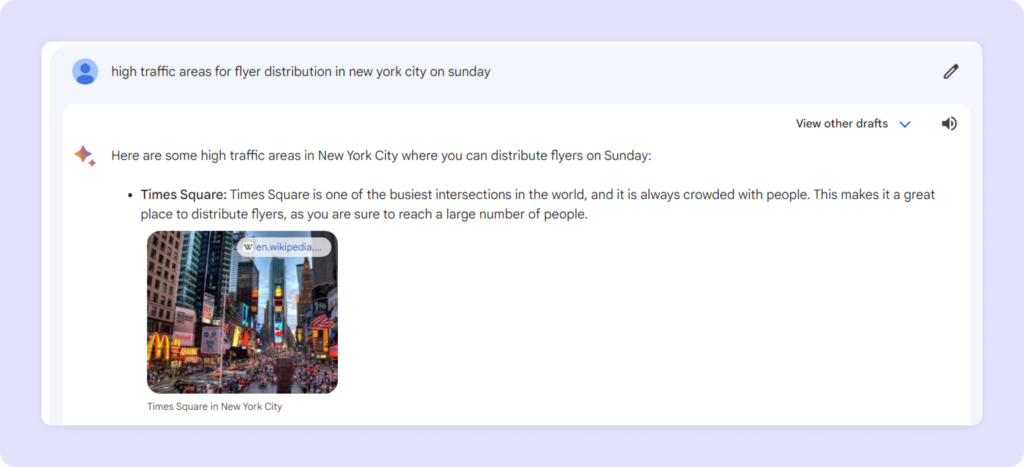
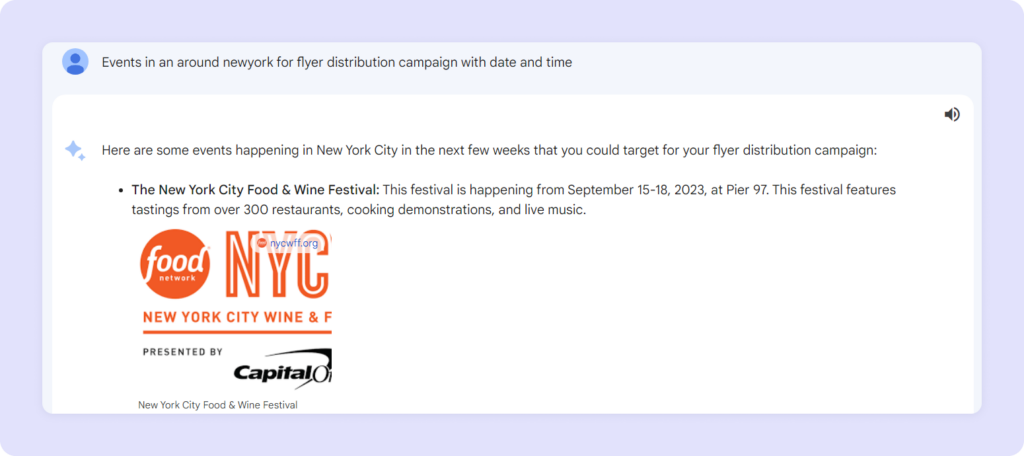
Leverage Google to find upcoming events
Google is another powerful tool that can help you identify the right campaign location, especially when you want to target an audience who attend a specific event. For instance, a simple search to find local events in New York will give you a list of events lined up for the current and upcoming week.
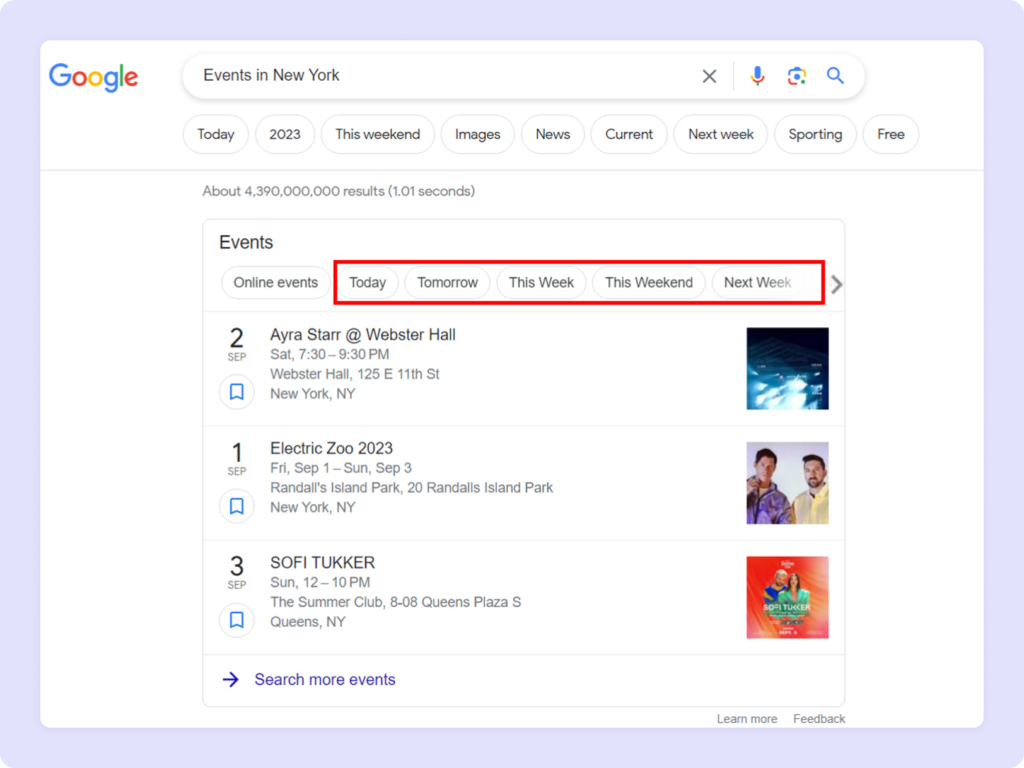
Google Trends
Google Trends can provide valuable information about the popularity of keywords and topics in different locations. This can give you an idea of where your target audience is most active and engaged. You can access Google Trends by visiting https://trends.google.com/trends/
All you have to do is:
- Add the keyword or search term for a product or service you offer.
- Select the correct category for your keyword.
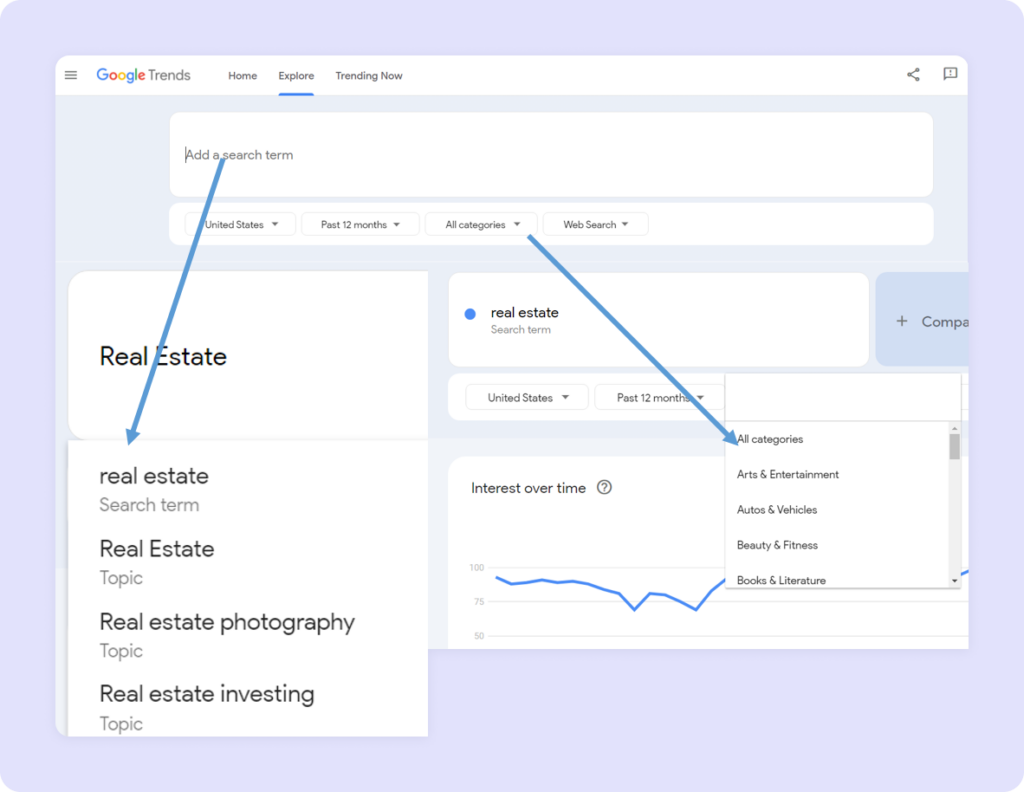
- Scroll to interest by region and select ‘Metro’ or ‘City’ based on your preference.
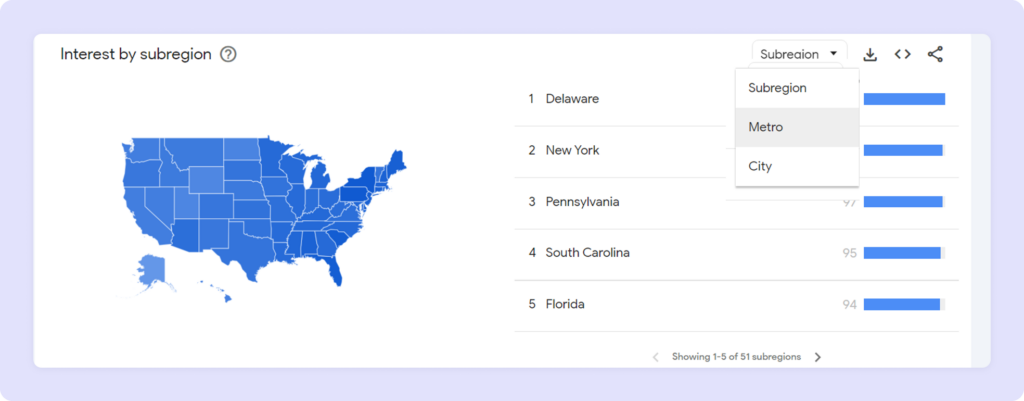
- Upon selecting ‘Metro’, you can access the interest level by region.
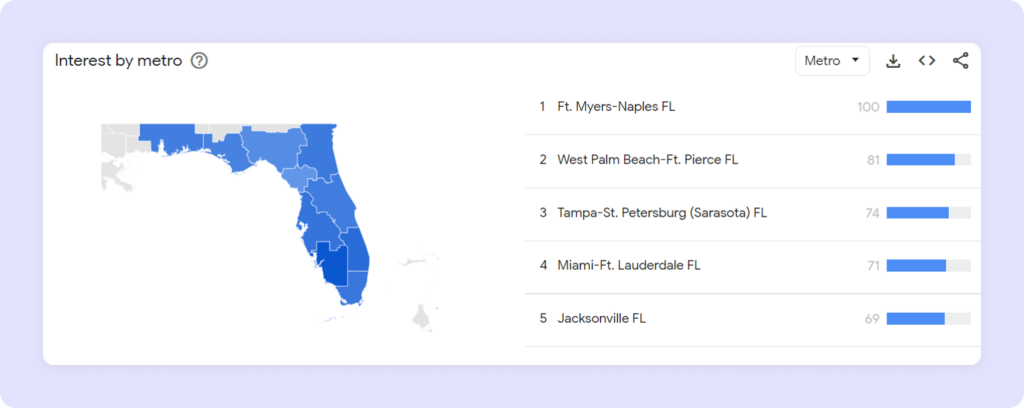
- You can further capture the interest level of users by suburb.
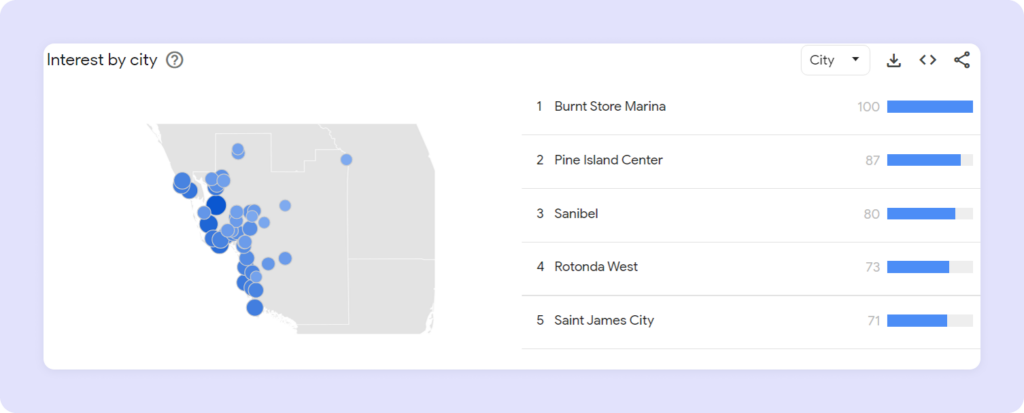
Facebook Audience Insights
Suppose you’re using Facebook for your marketing campaigns. In that case, Audience Insights can provide detailed demographic information about your followers, including location data, interests, and behaviors, which can be incredibly useful for targeting specific locations.
To access Audience Insights, login to your Meta Business Manager account and select ‘Audience’ from the left panel. From there, you will have access to a wealth of information about your followers’ ages, locations by country, and locations by city.
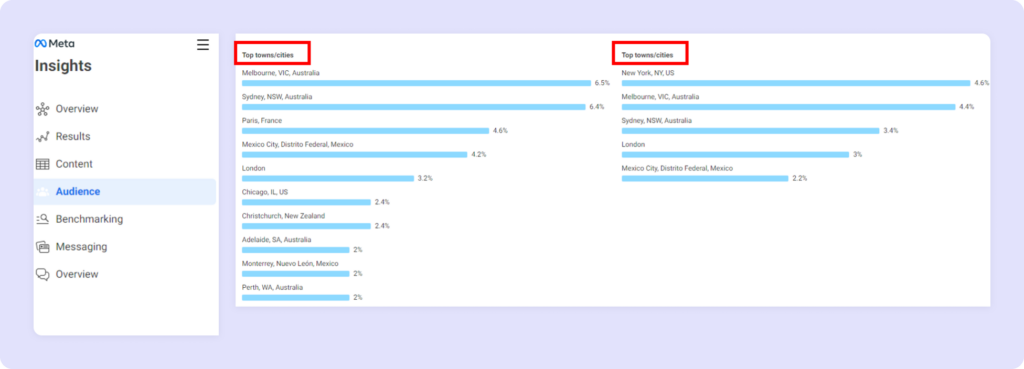
Google Ads and keyword search volume
Google Ads is a great platform for accessing information related to audience interest with respect to specific areas. To find this data, you need to head over to the Google Ads platform, click on ‘Tools and settings’ and access the ‘Keyword Planner.’
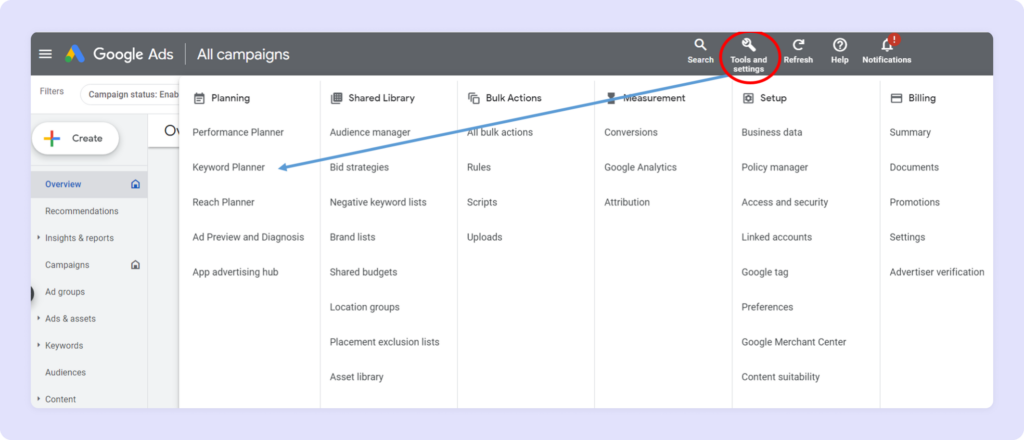
Then select ‘Discover new keywords.’
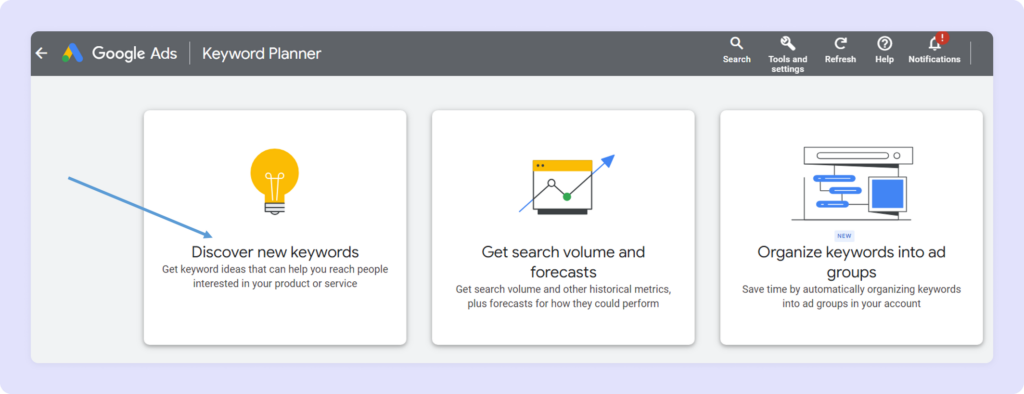
Enter the keyword related to your industry and select a locality within your city.
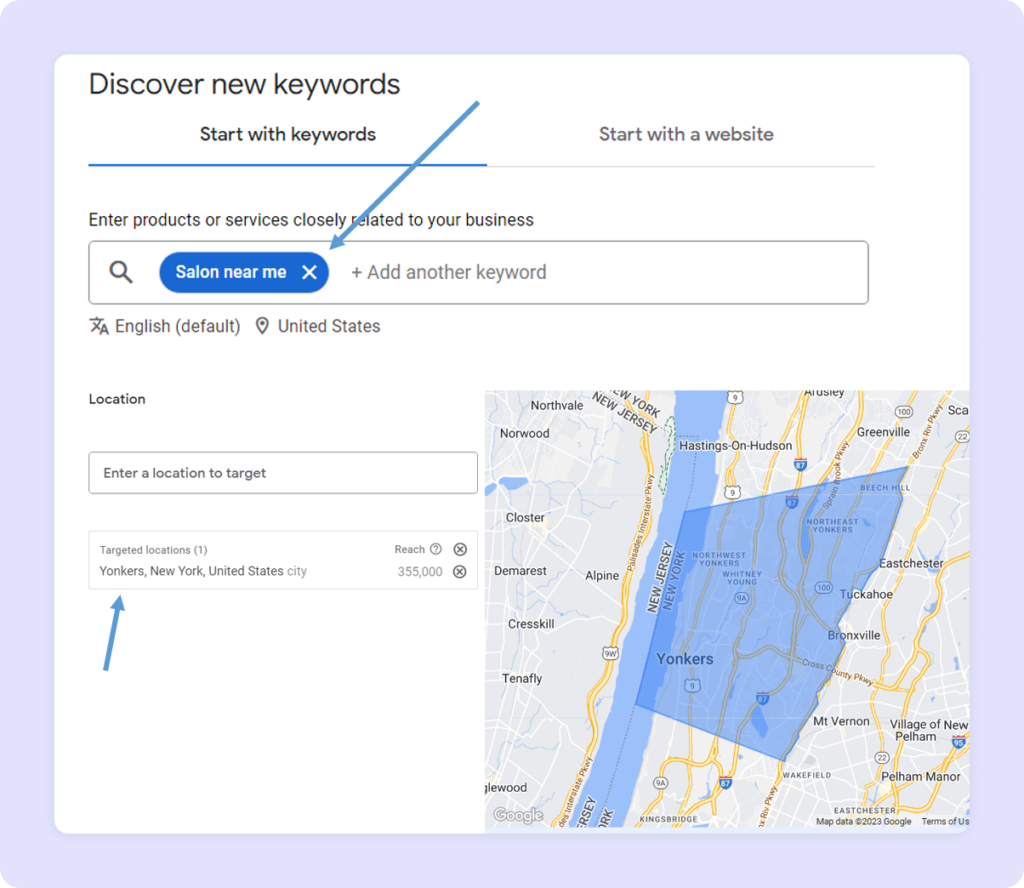
You will now be able to see average monthly searches from a specific area, determining the number of people interested in your available services.
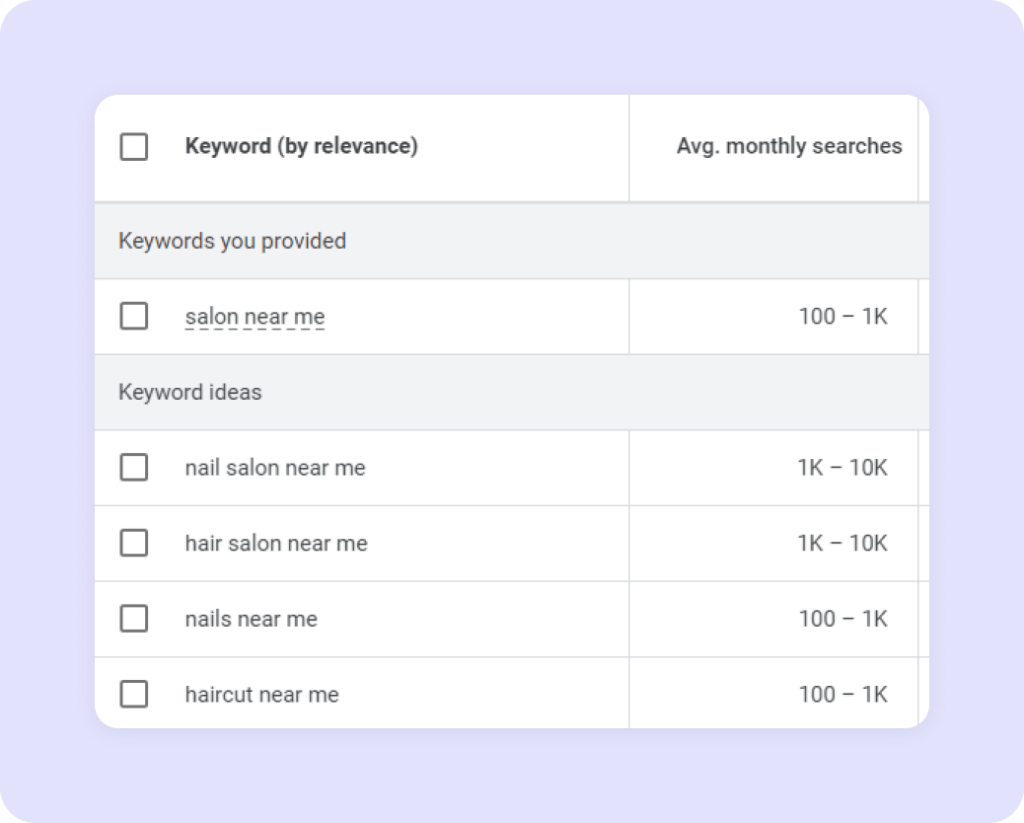
Demographics Pro
Demographics Pro is a tool that offers in-depth insights into the demographics of your social media followers. This can help you understand the age, gender, location, and other key characteristics of your audience, aiding in your location-based targeting.
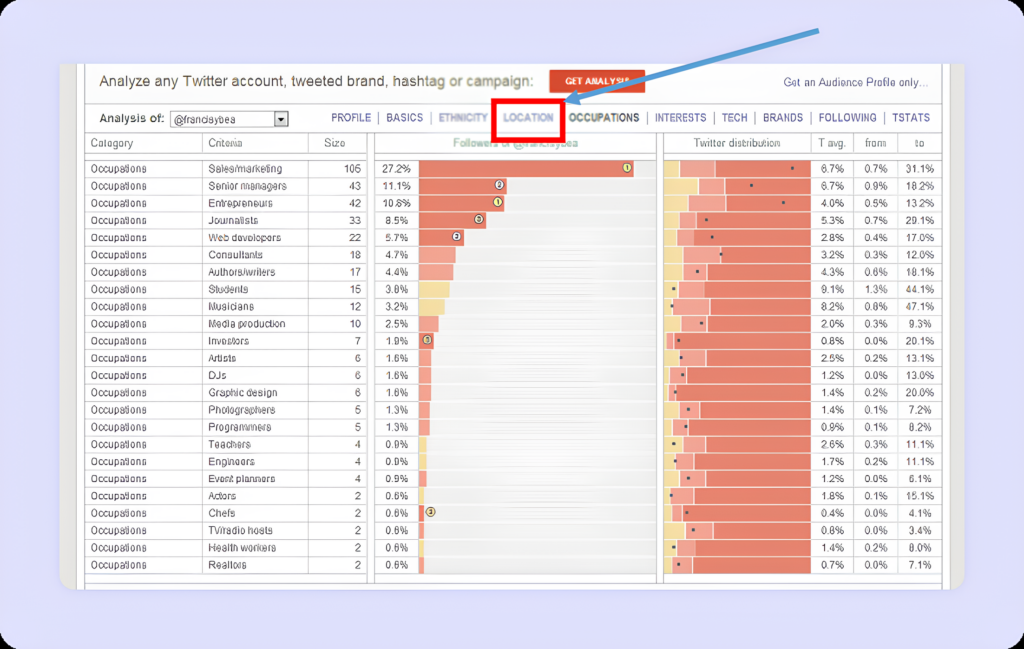
Using Demographics Pro, you can not only access their location information, but also their ethnicity, occupation and interests.
Try Audiense.com
Audiense.com is another platform that provides insights into your audience. It can help you identify influential users, analyze demographics and their locations, and better understand your followers’ interests.
Public transportation hubs
Transportation hubs such as bus stops, subway stations, and train stations tend to have high foot traffic. These areas are often ideal for reaching a diverse audience.
Tourist attractions
Popular tourist attractions, landmarks, and entertainment districts are usually bustling with visitors. Targeting marketing efforts in these areas can expose your brand to a broad audience.
You can use BARD AI to get a list of tourist attractions in your city or neighborhood. Here is an example prompt:

Commercial centers
Areas with shopping malls, markets, and commercial districts are magnets for shoppers. These locations draw in people who are already in a buying mindset, making them suitable for various marketing strategies.
Best practices when selecting locations for a flyer distribution campaign
Consider your target audience
Where are your customers located? What are their needs and wants? When choosing a location for flyer distribution, it is important to consider the interests of your target market. For example, if you want to target young professionals, you may want to distribute flyers near office buildings, bars, and restaurants.
Analyze the competition
It is crucial to analyze the competition when choosing a location for flyer distribution. It allows you to identify the gaps in their marketing strategy, enabling you to differentiate your flyers and messaging to attract customers better. Additionally, it can help you refine your approach; for example, you want to ensure that you are distributing your flyers in areas where your target market is likely to see them.
Here are some tips to find out what type of flyers are being distributed by your competitors:
- Check their website or social media. Many businesses will post images of their flyers on their website or social media pages. This is a great way to see what they’re currently promoting and who their target audience is.
- Go door to door. If you’re in a competitive market, you may see flyers from your competitors in people’s mailboxes or on their doorsteps. This is an excellent way to get a first-hand look at their materials and see how they’re targeting your target audience.
- Talk to your customers. Ask your customers if they’ve seen any flyers from your
competitors, as they may be able to give you some insights into what the flyers say and how they are distributed.
Consider the cost of distribution
How much can you afford to spend on flyer distribution? The cost of distribution can vary depending on the locations selected, distribution method, campaign length, and several other factors, including the format, thickness, and number of flyers printed. Indeed, the more flyers you print, the lower the cost per flyer because the printing company can spread the fixed costs of printing over a larger number of leaflets.
For example, if you print 1,000 standard-thickness flyers, the cost per flyer might be $0.77 per flyer. Yet, if you print 10,000 flyers of the same thickness, the cost per flyer could be $0.24, saving $0.53 per flyer, or 68% off. This increased number of flyers also helps to reach more people, get more conversions, reduce cost per acquisition (CPA), and increase ROI.
Consider this: 1,000 flyers at $0.77 per unit costs $770. Considering a 1% conversion rate, you get ten new customers for a CPA of $77. However, if you print 10,000 flyers by spending $2400 (cost per unit of $0.24) and get the same 1% conversion rate, you will get 100 new customers at a CPA of just $24.
Oppizi Ads requires you to select at least five missions to start a campaign. We distribute 500 flyers in each single mission. The more sites and missions you choose, the higher the cost, but you will also see more significant results.
Consider the time of day and day of the week
Your campaign can see greater success if you distribute your flyers during peak times, like the morning commute or on weekends. Moreover, it would be best to investigate when your target audience will likely be in your selected area.
Here is an example prompt that can be used to determine the best time of day to distribute flyers based on your industry:
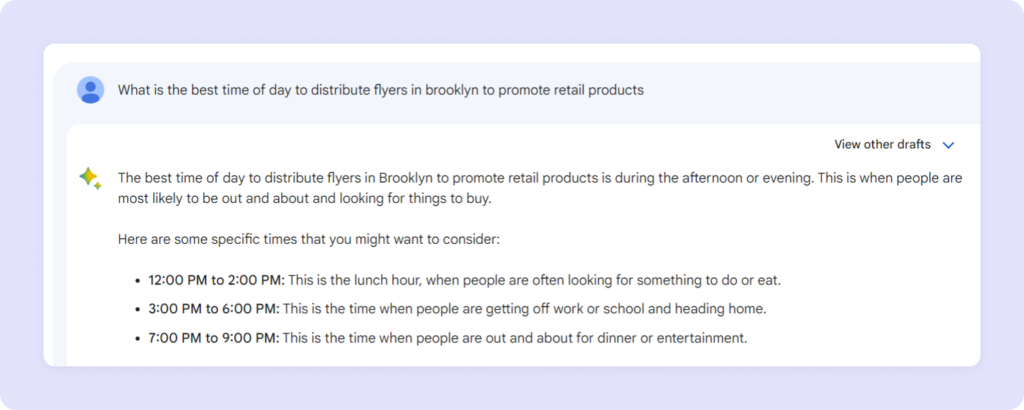
Get permission to distribute flyers
Some businesses and organizations or states and cities may have specific policies for distributing flyers. It is always best to check before fulfilling your campaign.
The laws of flyer distribution in a specific city can vary, so it is essential to check with the local governing body before distributing flyers. In general, however, there are a few common laws that most cities have in place.
- Littering laws: Most cities have laws against littering, which typically includes legislation against discarding flyers on the ground or in public trash cans.
- Zoning laws: Some cities have zoning laws that restrict where flyers can be distributed. For example, you may not be allowed to distribute flyers in certain areas, such as residential neighborhoods or near schools.
- Permits: Some cities require a permit to distribute flyers. The requirements for obtaining a permit vary from city to city, so it is important to check with the local government.
- Content restrictions: Some cities have content restrictions on flyers. For example, you may not be allowed to distribute obscene or discriminatory flyers.
One of the ways to check is to do a simple Google search. Look for information from .gov websites, which are legitimate and run by state governments.
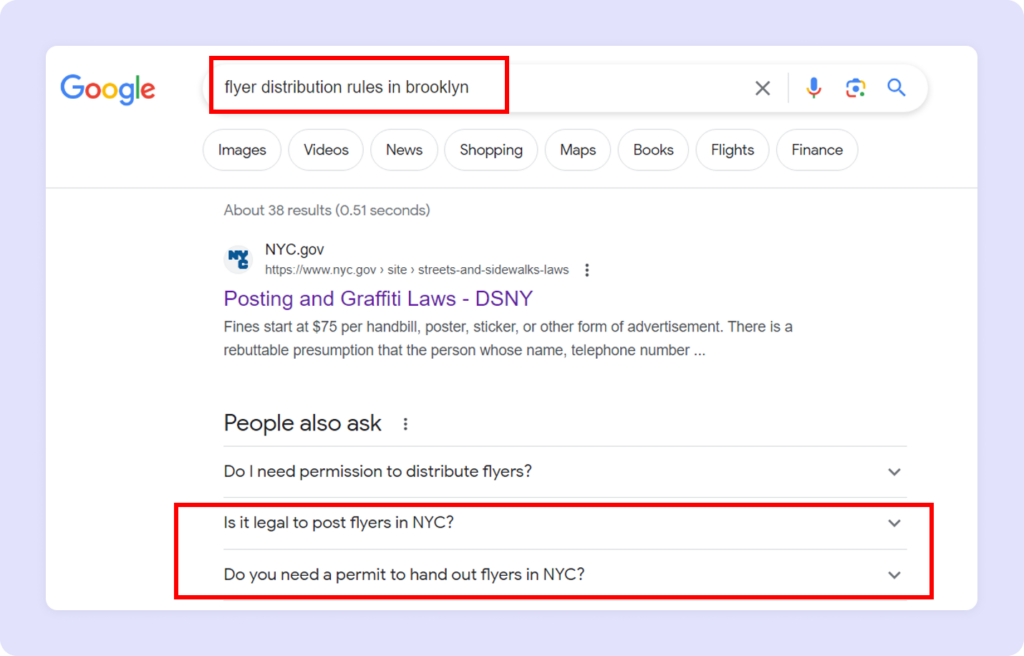
You can contact the local government to learn more about flyer distribution regulations in your area. You can usually find the contact information for the city government on the city’s official website. Once you have the contact information for the city government, you can request a copy of the city’s ordinances. The ordinances are the laws that the city has passed regarding flyer distribution and they will usually be available online or at the city hall.
Track the results of your campaign
Measuring the success of your campaign shouldn’t be a mystery. As such, we recommend implementing tracking methods directly into your flyers, as this streamlines the tracking process. Simply, the following methods encourage audiences to view your website or products while enabling you to track results. The three most popular methods of doing this are as follows:
- QR Codes: Feature a QR code on your leaflet that sends the viewer to a custom landing page, website, or app.
- Unique URLs: By adding a unique URL, customers have a direct link to content that will appeal to them.
- Discount codes: Promotional codes are a great way to drive traffic toward your website and increase conversions.
When using Oppizi Ads, monitoring the outcome of your campaign is easy. Our dashboard provides a comprehensive overview of your campaign’s live results, including 14 important metrics, such as cost per acquisition and conversion rate, which update in real-time. You can view the KPIs from the beginning of your campaign, but sign-ups will take slightly longer to appear as it will take time for customers to take this action.
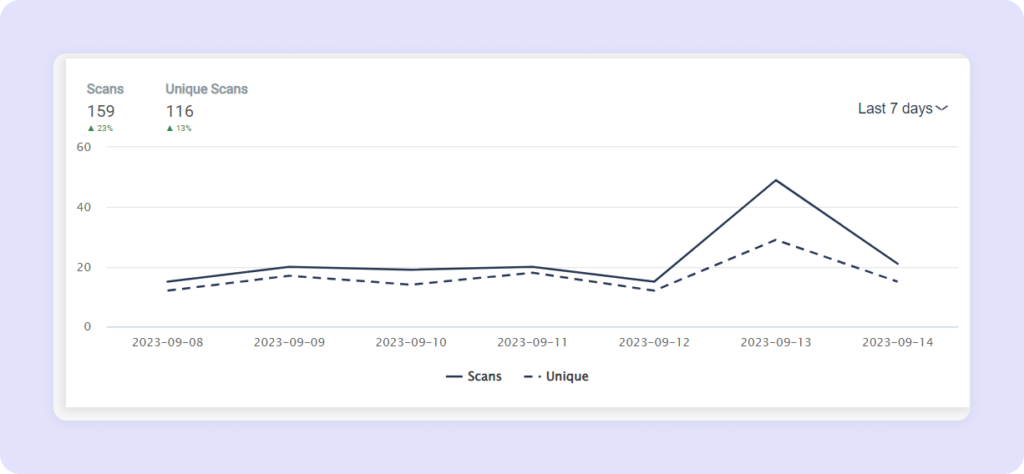
This data will enable you to optimize your campaign as it takes place and collect data for future campaigns. Indeed, you’ll no longer need to use multiple spreadsheets, as all the information you need is on one easy-to-use platform!
Select your location with confidence
By following this advice, you can choose a location that offers the best results for your business. While this may seem daunting initially, we can assure you that it’s easier than it looks, especially when you’ve researched before diving in.
For more information about location targeting, please visit the Oppizi Ads Help Center, where you’ll find all the answers you need to make your campaign a smashing success. If you’re ready to implement your newfound knowledge, sign-up to Oppizi Ads today and start connecting with your customers!







